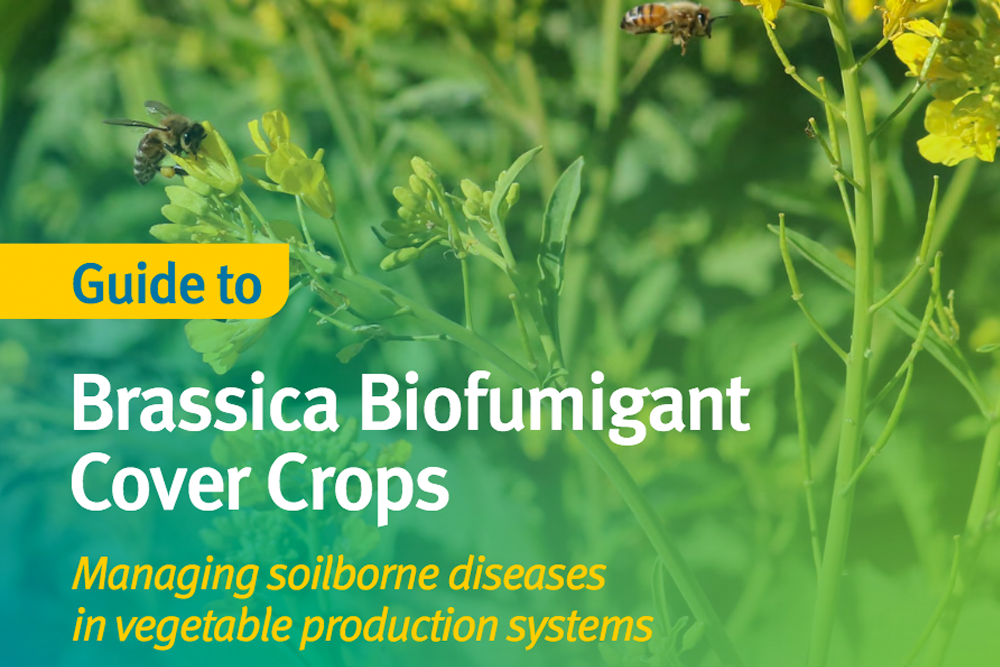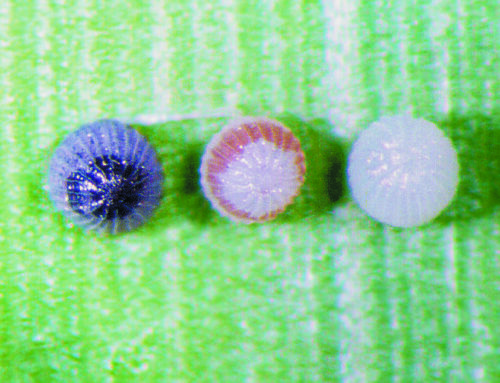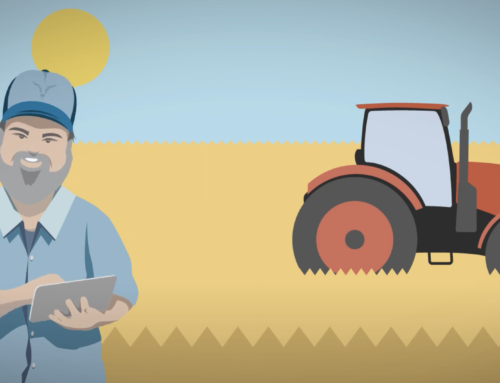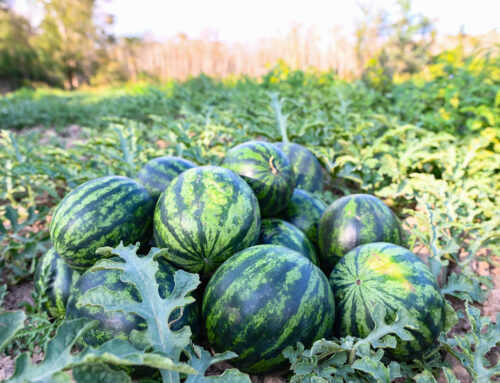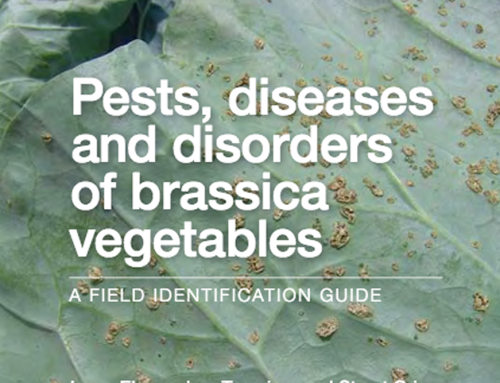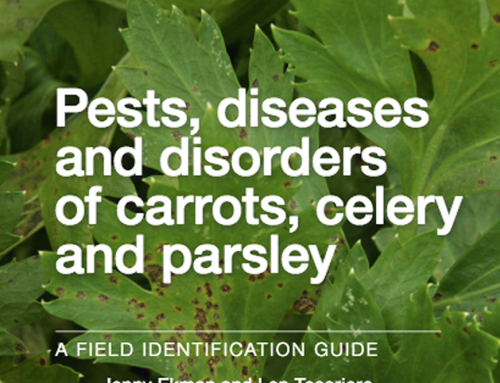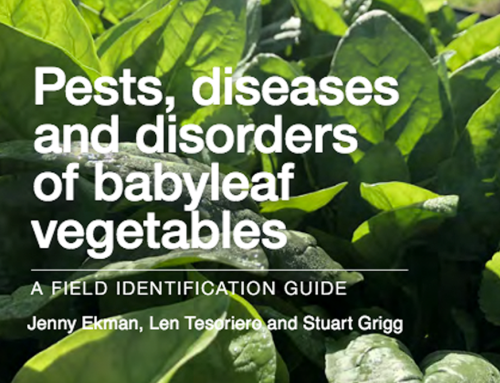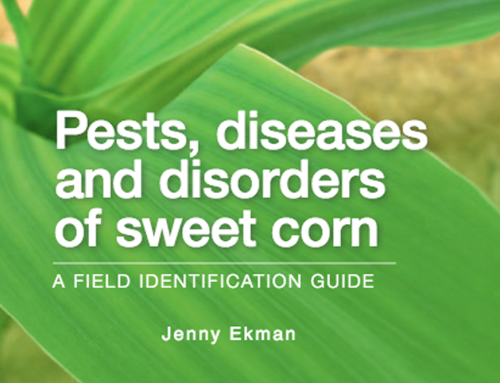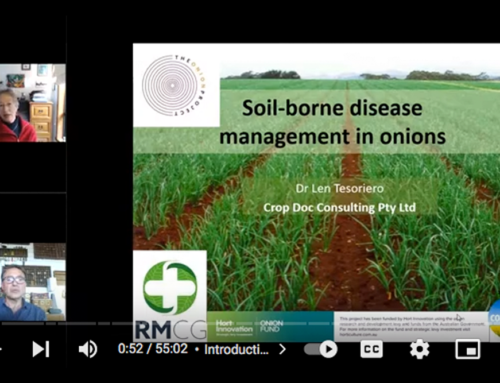Cover crops, also referred to as green manure crops, are crops planted as a break between commercial crops. They are grown and incorporated back into the soil rather than for products that are removed off-farm like commercial crops. Cover crops provide numerous farming system benefits including:
- Increasing soil organic matter
- Fixing nitrogen in the soil (legumes)
- Increasing soil microbial activity
- Improving soil structure such as improved water infiltration and soil porosity
- Scavenging nutrients that have leached beyond the root zone of commercial crops
- Preventing soil loss via water and wind erosion.
There are a variety of commercially available cover crop types, such as legumes and grasses. Brassica cover crops and specifically biofumigants are the focus of this guide. In addition to the normal benefits of cover cropping, biofumigants offer an alternative to synthetic fumigants for soilborne disease management if they can be successfully incorporated into vegetable crop rotations.
Biofumigant cover cropping is incorporated into vegetable rotations with higher seed costs and the assumption that these crops will contribute to disease management. This publication contains information to assist growers in understanding how biofumigants work and managing them for optimum efficacy against soilborne diseases.
The information in this guide has been developed through a series of field trials to assess biofumigants as cover crop options in vegetable systems. The majority of this work was conducted in south-east Queensland, particularly targeting summer cover cropping windows, to minimise soil loss off farm during storm events, as well as the benefits to soil health and disease management. While brassicas, including biofumigants are considered to be a winter cropping option, this work covered multiple growing seasons to see how different growing conditions effected the performance of biofumigant cover crops. This will broaden options for when biofumigants can be successfully incorporated into crop rotations.
The field work has evaluated various commonly used biofumigant varieties for:
- Biofumigant activity against known soilborne pathogens
- Growing window (or days to incorporation) across seasons
- Biomass production across seasons
- Concentrations of biofumigant compounds (glucosinolates).
This information can then be used to select the biofumigant variety most appropriate for individual situations including disease spectrum and cover cropping window or season.
The known soilborne pathogens included in this work comprise: basal rot (Sclerotium rolfsii), Onion white rot (Sclerotium cepivorum), charcoal rot (Macrophomina phaseolina), white mould (Sclerotinia sclerotiorum), Rhizoctonia species and verticillium wilt (Verticillium dahliae).
This work was funded by the Queensland Government through the Department of Environment and Science as part of the Investing in the Environment for the Future program 2016–2019 and Hort Innovation through VG16068 Optimising cover cropping for the Australian vegetable industry.

